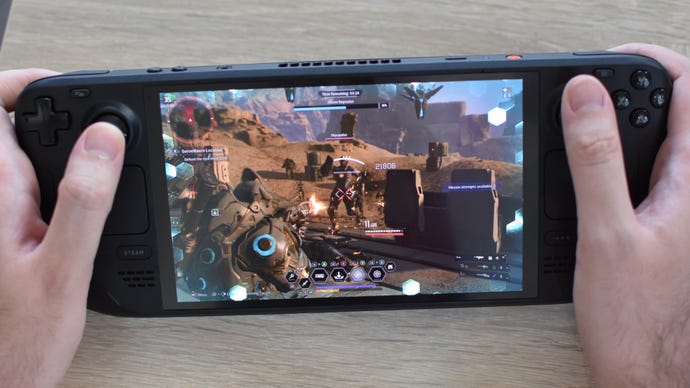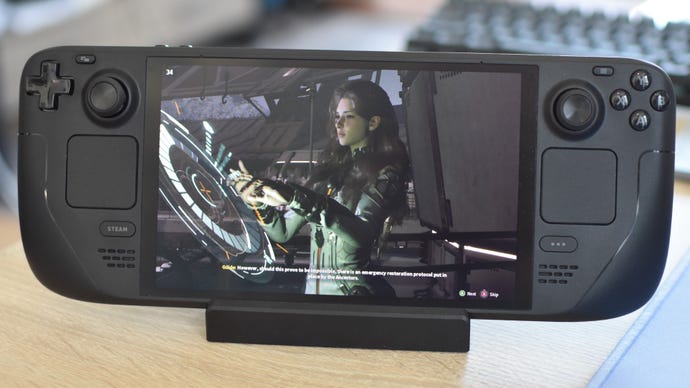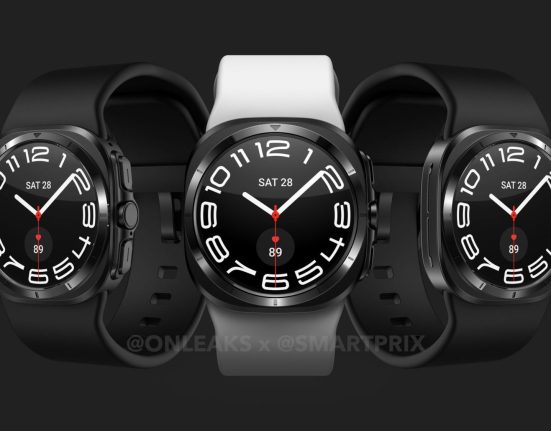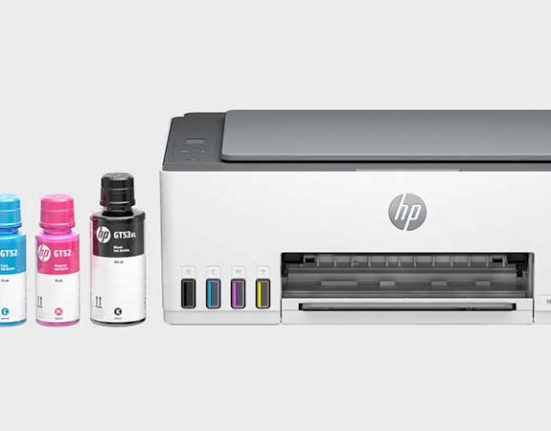In addition to giving The first descendant the OL' bank marks on the desktop, I was curious to see how this shiny looter shooter would run on the less flexible hardware in the game. steam cover. The answer: at first it wasn't. Fortunately, a semi-quick fix was enough to get me in, where I found a game that, for all its flaws, ray tracing Tilts, he is comfortable with life on deck. Reasonably. Most of the time.
With any luck, my problem might be fully fixed by the time The First Descendant launches on July 2. Partly because I was using a pre-release build that wasn’t technically the final one, and partly because the problem itself was a silly one: the launch was blocked due to a case of missing Visual C++, something that Steam Deck’s Proton compatibility sorcery usually fixes. Come on, Proton lad, you’re making a mistake.
If this ever happens to you, in The First Descendant or any other game, I highly recommend Video tutorial by YouTuber JD Ros on how to fix it. The method is reduced to installing the latest versions of C++ through Steam Deck Desktop Modeand then add your executables to the game launch options. This worked wonders for me and I suffered no more compatibility headaches from then on.
I was even able to run The First Descendant's graphics settings menu without any issues, something that was unsure after previous testing on a low-end rig. RTX 4050 The laptop revealed that the game will lock you to the Low preset if it thinks your hardware isn't up to par. If anything, that would have made more sense here than on the RTX 4050, although the Deck could still safely land in the 30-40 fps range when running on Low alongside the Quality level FSR upscaling. There are faster settings available for the latter, but Quality produces an image that is by far the closest to the native 800p resolution.

Generation of FSR 3 frames The first version of The First Descendant is available on top of this, and works even on the platform’s tiny APU, boosting the frame rate to 40-50fps. It’s not an entirely convincing implementation, though: the input lag it adds is palpable, and even during the most 50fps-inclined bits, it still feels a little sluggish. In other words, the frames generated by the algorithm are arguably fake, even if they don’t clearly show any errors in image quality. We’ll go over the best actual The First Descendant settings to use on the Steam Deck a few paragraphs below, but you can probably skip past the frame generation.
At the same time, you'll want the “real” frame rate, traditionally represented, to stay above 30 fps as much as possible. The First Descendant is ruthless about kicking players out of online games at the first sign of technical instability, meaning big FPS drops risk getting you kicked out of a mission long before you can get your shot. swag. This has happened to me on a couple of occasions, specifically on the Steam Deck, so it's vital that your settings don't overload the APU. Not just for the sake of fluidity, but to appease the game's crippling mistrust of suboptimal performance.
It’s certainly not ideal, but it’s also a rarity: far more often than not, The First Descendant feels just right on the Deck. The default controller combinations, in particular, are sensible and well thought out, managing to cram a variety of sci-fi magic powers, grappling hooks, and melee moves into a small selection of buttons without requiring any inhuman effort.
Battery duration It's firmly in “could be better” territory, judging by my 2h 15m of playtime on the OLED Steam Cover and 1h 17m on the original LCD platform. Missions tend to be fairly short, so you're unlikely to ever be caught with a dead battery mid-sortie.

The First Descendant Steam Deck Setup Guide
On desktop hardware, huge performance gains can be had by simply changing a few settings from Ultra to Medium; most graphics options don't require much to run at their peak compared to their lower equivalents. Steam Deck, on the other hand, is much more sensitive to these settings, and since we want to avoid that online-expulsion measure as much as possible, a combination of Low and Medium seems to be the best middle ground:
- Ray tracing: Off
- Additional options: FSR about quality
- Visibility: Half
- Anti-aliasing: Half
- Post-processing: Half
- Darkness: Low
- Global lighting: Low
- Reflections: Low
- Textures: Half
- Effect: Low
- Vegetation: Low
- Shading quality: Half
- Object: Low
- Physical: Half
- Motion blur: Off
Simply opting for the Low preset might seem like the safest option, but I honestly couldn't see a performance difference between that and the more appealing settings above. You're still getting around 30-40fps in the most demanding areas, maybe in the mid-forties in tight interiors.
And again, frame generation is not as useful as it seems. Even if it didn't have the slightly slow and paradoxically choppy feel, it shouldn't even help with the “jitter detected” issue, since the generated frames are placed outside of the GPU's normal rendering process. In very non-technical terms, this means that they are largely invisible to the system, so they won't be taken into account when the game thinks your Steam Deck isn't running fast enough.













Leave feedback about this